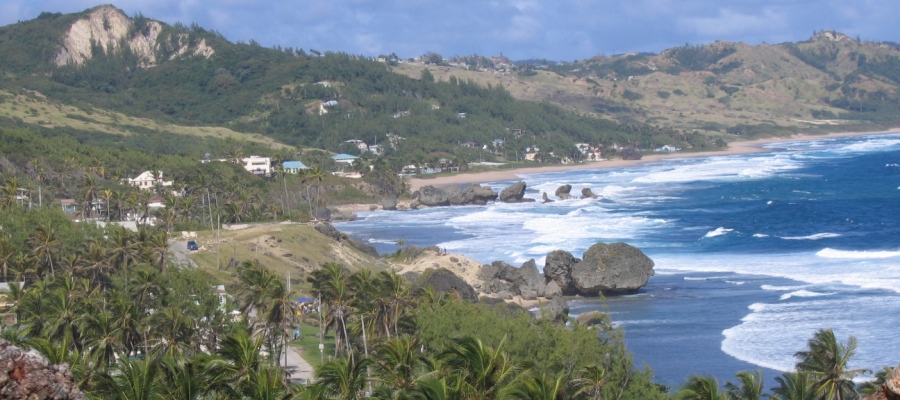Without question, Barbados is the “most British” island in the Caribbean. Afternoon tea is a ritual, cricket is the national pastime (a passion, most admit), and dressing for dinner is a firmly entrenched tradition.
Without question, Barbados is the “most British” island in the Caribbean. Afternoon tea is a ritual, cricket is the national pastime (a passion, most admit), and dressing for dinner is a firmly entrenched tradition. And yet, Barbados is hardly stuffy—this is still the Caribbean, after all. Rather, Barbados is a sophisticated tropical island with a rich history, lodgings to suit every taste and pocketbook, and plenty to pique your interest both day and night.
Drawing on its English, African and West Indian roots, Barbados has established its own distinctive identity, evidenced in its customs, traditions and values and passionately expressed through the rich history, exceptional cuisine and art.
Though given the name “Los Barbados” by Portuguese sailors in the 1500’s, Europeans were not the first to inhabit this easternmost island in the Lesser Antilles. This distinction goes to the Amerindians, who arrived from Venezuela, followed by the Arawak Indians, who in turn were dismissed by the Carib Indians in the 13th century. However, when the first English settlers arrived in 1627, they found an island that was largely uninhabited, and set about establishing a colony that would remain a part of the British Empire for 334 years.
Relatively flat, with a favorable climate, Barbados offered ideal conditions in which to grow sugar cane. This gave rise to the establishment of sugar plantations, and with them, indentured servitude and slave labor.
The success of the sugar, rum and molasses trade brought great wealth to the island in addition to thousands more African slaves. But in 1833, with abolitionist sentiments growing, Barbados became the first country in the world to abolish the slave trade. It was not until 1838 that the slaves were finally freed, although the true emancipation was still a long way away. Colonized by the British since 1627, Barbados gained full independence of the British Empire in 1966 but is still a member of the Commonwealth
Barbados is a coral island, pushed out of sea by volcanic activity millions of years ago. Most of the country is circled by coral reefs with its stunning underwater world which fall in a series of “terraces” in the west and go into an incline in the east. The north shore of the island is lined with jagged coral cliffs which collide with the relentless breakers. Within the Barbados coral core there are many caves and underground lakes which provide an excellent supply of drinking water.
The interior of Barbados with its many deep ridges and gullies shows an interesting distribution of tropical flora and fauna with some 700 species of flowering plants and several differing ecosystems.
The highest concentration of plant species, like the silk cotton tree or macaw palm, on the island is at Turner`s Hall Wood in St. Andrew. Andromeda Botanical Garden presents the finest collection of tropical plants. The realm of Welchman Hall Gully is fashioned from the collapsed roofs of caves and filled with the tropical riches of nutmeg, bamboo and palm trees.
While the Baobab Tree or “Monkey Bread Tree” is native to Madagascar, two magnificent examples can be found in Barbados. First brought over from Guinea in Africa in 1738, the larger of the two trees is found in Queen’s Park in Bridgetown and measures 55 feet in circumference. The smaller, though equally impressive second tree is found on Warren’s Road in St. Michael.
The Chancery Lane Swamp plays host to migrant shorebirds and is the nesting area of Pelicans, Blue Herons and Frigates. The Barbados Wildlife Reserve, near Farley Hill National Park, gives visitors the rare opportunity to closely observe a variety of animals, including the famed Barbados Green Monkeys, in their natural environment
The Caribbean is full of people who are larger than life. They fill your mind with their colourful speech, their walk, their engaging looks and their endless energy and love of life. They are children who will never grow old, no matter what their age, they insist on having fun.Barbados personalities are no exception to the rule, but Barbadians (also known as Bajans) will surprise with their warmth, casual charm and sophistication. The island is a reflection of its people. Here the simple chattel house sits boldly in the splendor of wealthy estates. The beach vendor will happily discuss the meaning of life with anyone, from Pope to movie star. They usually have an inspired point of view.
